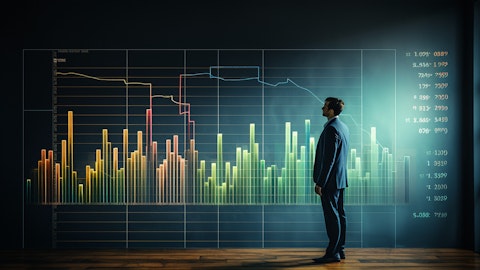I would like to thank the whole Tesla Energy team for their efforts to make this a reality. Our services and others business also started contributing meaningfully to our results and our fleets — as our fleet grows. As we expected the fleet-based revenues from supercharging, used cars, and services continue to increase. For 2024, our focus is to continue growing our output, continuing our cost reduction efforts, and increasing investments in our future growth initiatives. Accordingly, we are currently expecting our capital expenditure for 2024 to be in excess of $10 billion. We believe this would be critical in helping us lay the foundation for the next phase of growth. Once again, I would like to thank everybody at Tesla, our investors, and our suppliers for being with us in this journey.
We can open it up to questions, Martin.
A – Martin Viecha: Thank you. Let’s go through investor questions. Question number one is from Michael. Given that you moved the start of the next-generation compact vehicle production to Austin, has the timeline improved so that we might see next-generation platform vehicles in 2025?
Elon Musk: I mean, I would certainly say things with they should be taken with a grain of salt, since I am often optimistic. I don’t want to blow your minds, but I’m often optimistic regarding time. But our current schedule shows that we will start production towards the end of 2025. So sometime in the second half. That’s just what our current schedule says. But there’s a lot of new technology like a tremendous amount of new revolutionary manufacturing technology here. The reason I wanted to put this new revolutionary manufacturing line at Giga Texas was because we really need the engineers to be living on the line. This is not sort of off the shelf, just works type of thing. And it’s just a lot easier for Tesla engineering to live online if it’s in Austin versus elsewhere.
So — but we are currently expecting to start production second half next year. That will be a challenging production ramp. Like, as I can emphasize we’ll be sleeping on the line practically. In fact, not practically. We will be. But I am confident that once it is going, it will be head and shoulders above any other manufacturing technology that exists anywhere in the world. It’s next level. So it’s always difficult to predict what that S-curve of manufacturing looks like. So it always starts off real slow, and then it grows exponentially. So — and predicting that intermediate S-curve is difficult, so I don’t know. It’s hard to say what the unit volume would be next year. We’re not going to make any predictions on that front, but it does seem quite likely that we will start production next year.
Martin Viecha: Thank you. The next question is from Michael again. What has been the barrier to ramping 4680 cells into the multi-million cells per week rate and when do you expect to get there?
Elon Musk: Karn?
Karn Budhiraj: Yeah. First, I just want to allay any concerns regarding 4680 limiting the Cybertruck ramp, because I’ve seen some people commenting about that. To date, 4680 production is ahead of the ramp with actually weeks of finished cell inventory. And the goal is to keep it that way, not only for Cyber, but for our future vehicle programs. And as Elon said, it is an S-curve here too. It’s hard to predict these things, but I’m just describing our goals.
Elon Musk: It’s a hard problem.
Karn Budhiraj: Yeah.
Elon Musk: There are entire companies where all they do is make battery cells. That’s, like, all they do.
Karn Budhiraj: Indeed, indeed.
Elon Musk: We do a lot of other things, and we got a lot of breakthrough technologies that take time to figure out with 46. It’s not just that it’s a 46 millimeter diameter by 80 millimeter [Indiscernible] cell. That’s just the dimensions. There’s tremendous amount of new technology in the cell itself.
Karn Budhiraj: And manufacturing technology.
Elon Musk: Yes, exactly.
Karn Budhiraj: And just regarding what the team was able to do in Q4, Texas successfully swapped line one from the Model Y design of the cell to the Cybertruck design of the cell, which was the 10% cell energy increase I’ve mentioned before. And as with any major new product introduction, the factory and engineering teams collaborated to ensure quality of the new design and the process changes as their first priority. And now our focus returns to cost and production ramp in Q1. And in terms of what we’re doing, we’re currently running one production line, one assembly line, using two assembly lines in addition for yield and rate improvement trials, and we have a fourth in commissioning, and four more will be installed starting in Q3 this year. So definitely this is a big year for ramping 4680.
Elon Musk: But we also do want to emphasize that we also expect to ramp orders from our suppliers.
Karn Budhiraj: Yeah.
Elon Musk: So this is not about replacing our suppliers, it’s about supplementing our suppliers.
Karn Budhiraj: Yes.
Elon Musk: So we are very appreciative of our suppliers. Panasonic, obviously, is our longest supplier. They’re an amazing company. We’ve got CATL, we’ve got LG and BYD.
Martin Viecha: Thank you. The next question is from Adam. Should retail shareholders be concerned that Elon has stated that he is uncomfortable expanding AI and robotics at Tesla if he doesn’t have 25% of voting?





